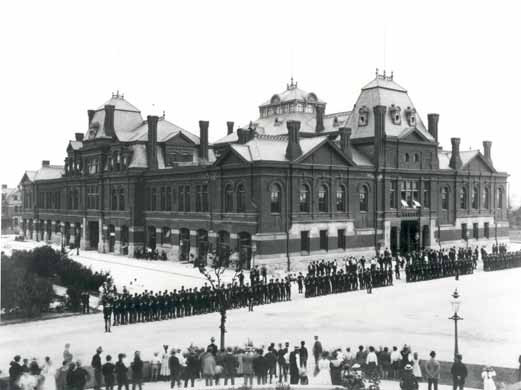Labor Day 2014: How a Bloody Spate of Strikes and Slaughter Led to a Public Holiday

In 1886, four years after the Labor Day holiday was first proposed, a home-made bomb filled with dynamite exploded during a workers' rally in support of an eight-hour day.
On 4 May, a crowd of between 600 and 3,000 gathered in Haymarket Square, Chicago, to demand shorter working hours and protest the killing of several workers by the police previous day. Until the evening, the rally had remained peaceful.
Haymarket Massacre
Samuel Fielding, a socialist and labour activist who was addressing the rally, finished his speech at around 10.30pm. Police arrived en masse and marched towards the speakers' wagon.
As they ordered the rally to disperse, an unknown person threw a bomb into the path of the advancing police. The fuse sputtered for a few seconds before the device exploded, killing policeman Mathias J Degan with shrapnel and fatally wounding six other officers and at least four civilians.
Shortly after the blast, gunshots echoed around the crowd between police and demonstrators. Accounts vary widely as to who fired first, and whether the crowd fired at the police. According to the Chicago Herald, around 50 dead or wounded civilians lay in the street in scenes of "wild carnage".
In the internationally-publicised legal proceedings that followed, eight anarchists were convicted of conspiracy - but while the evidence suggested one of the defendants may have built the bomb, it was concluded that none had thrown it.
Seven were sentenced to death and one was given 15 years in prison.
Effect on Labor Day

Some say the event was a setback for the American labour movement, specifically in its fight for the eight-hour day.
However, the event can also been seen as strengthening its resistance – particularly in Chicago, where growth and vitality led to the establishment of the Labor Party of Chicago in 1886.
Afterwards, pressure continued for an eight-hour day. At the convention of the American Federation of Labor (AFL) in 1888, the union agreed to campaign for the shorter working day. Eventually, 1 May 1890 was agreed as the date on which workers would strike once again.
Yet after the bombing, President Grover Cleveland feared that commemorating Labor Day on 1 May could become an opportunity to celebrate the affair. Instead, in 1887, it was established as an official holiday in September in Oregon.
Pullman Strike
The Pullman Strike, a nationwide railroad walk-out in the summer of 1894, was the final, bloody event which pushed officials to make Labor Day a federal holiday.
It was triggered in Pullman, Chicago, when nearly 4,000 factory employees of the Pullman Company began a wildcat strike in response to a reduction in wages, and a number of workers were killed at the hands of the US military and US marshals during the strike.
Shortly afterwards, Congress unanimously voted to approve legislation that made Labor Day a federal holiday. Less than one week after the strike ended, President Cleveland signed it into law.
Modern-day celebration
Now celebrated annually on the first Monday of September, Labor Day is known for shopping sales, barbecues and catching the last of summer.
More than a century since the holiday was proposed in 1882, Labor Day has become a statutory holiday in every day – constituting a yearly national tribute to the contributions workers have made to the prosperity of the country.
© Copyright IBTimes 2025. All rights reserved.





















